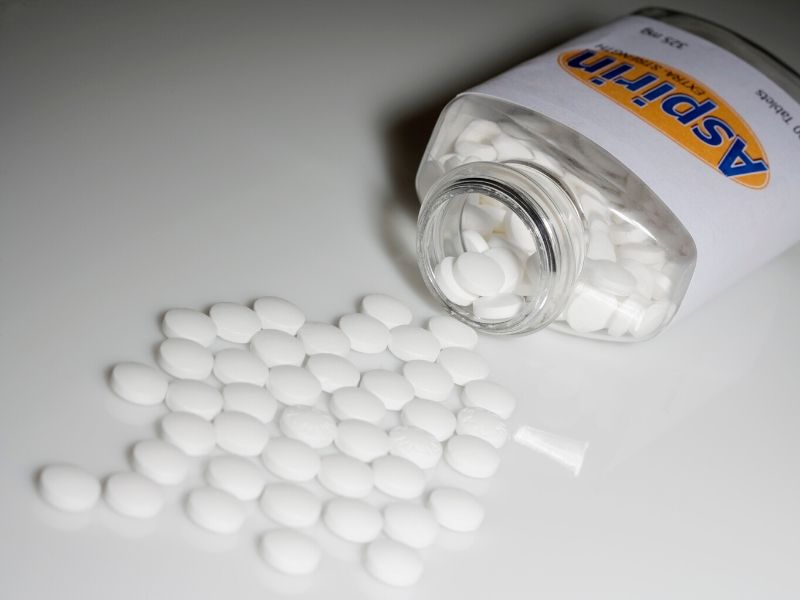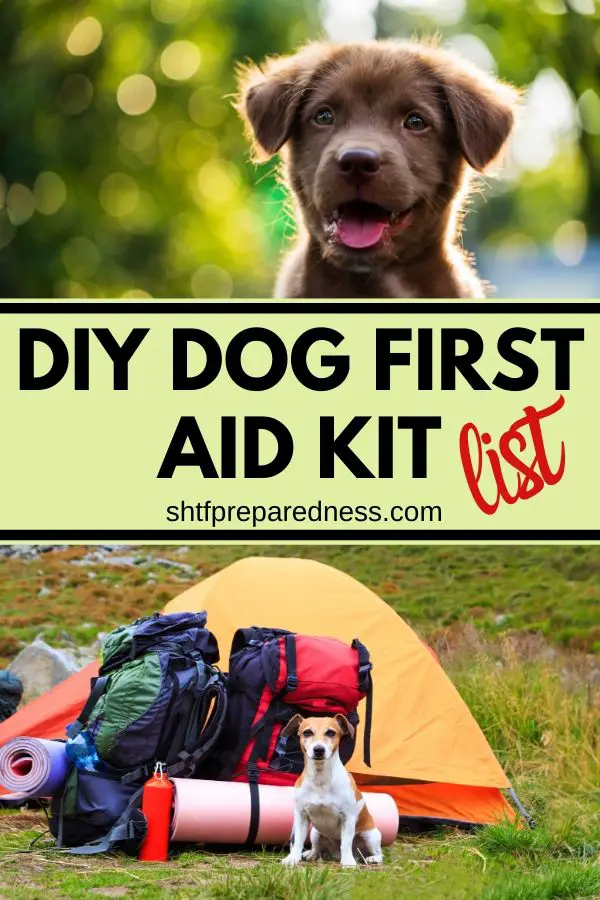SHTFPreparedness may collect a share of sales or other compensation from the links on this page.
Maybe you’re going on a road trip with your dog, maybe you’re going camping, or maybe you just have a pooch who gets hurt more often than not? Some dogs (like my stupidly loveable Goberian Misty) can be quite clumsy and silly, to say the least. It doesn’t matter: it’s always good to have a first aid kit for your best friend’s sake. It might sound difficult to make, but a DIY dog first aid kit is actually quite easy to make when you know what you should put in it.

Not sure where to start? Well, follow the guide, and we’ll give you all the tips and tricks for a perfect pet first aid kit!
What To Include In A DIY Dog First Aid Kit
You Will Need Some Hydrogen Peroxide
365 Everyday Value, Hydrogen Peroxide, 16 fl oz
Just like humans, dogs can get hurt too. By playing in the backyard or at the dog park too much, your best friend can get wounded. And, an infected wound can become pretty ugly and lead to worse, more serious problems.
So, always make sure to have Hydrogen Peroxide in your DIY first aid ki. Use it for sterilization, by flushing it on your dog wound, to prevent infection.
Gauze Is a Staple

A perfect first aid kit would never be complete without gauze, whether you are using it for humans or for your furry best friend.
Make sure to keep gauze in your pet’s first aid kit, as it can be a life savior. Not only can gauze be used to cover a scrape or a wound, but it is also very useful when it comes to muzzling a wounded animal. Wounded dogs tend to do when they are anxious or in pain. This will prevent your furry friend from biting you.
But, if you don’t have gauze in a case of emergency and you need to muzzle your dog, you can use a cloth or a towel as well. Just make sure that your pet has no trouble breathing.
Activated Charcoal Is Also a Must

Why would you use activated charcoal, you might ask? Well, we already know that for us humans, it’s good for our stomachs and our teeth. But what about dogs?
If your dog eats something poisonous, feeding him activated charcoal is the best thing to do in this case. Of course, this is just first aid. You will have to take him to the vet as soon as possible before things get more serious than they already are.
Don’t Forget Self-Adherent Bandages
Colorful Self Adhesive Breathable Bandage Wrap Pets  Self Adhesive Non-Woven Bandage Wrap for Pets
Self Adhesive Non-Woven Bandage Wrap for Pets 



These are a must, mostly because they’re easier to use on pets, especially on dogs that move too much. But, make sure to buy the pet version ones. The ones used on humans will stick to your dog’s fur and hurt him when you will have to remove or change it.
If you can’t find self-adherent pet wrap, the best option would be to use adhesive tape with non-stick bandages for your dog.
Get Some Antihistamine in There
If your dog has an allergic reaction to something, an antihistamine will definitely come in handy.
Let’s say you are camping with your dog, and he gets bitten by a bug. He might develop an allergic reaction to that, and you will be happy to have antihistamine in your DIY dog first aid kit.
You can give your dog a dose of Benadryl orally, which will relieve the swelling, hives, and itchiness. But, make sure to check out with your veterinarian first, because the doses we need are different from the doses dogs need.
Get Your Paws on Some Paw Balm
Just like dry lips can be painful and annoying, cracked and dry paws are the same for dogs. So, make sure to always have paw balm in your dog’s first aid kit, just in case he needs it later.
Try our soothing DIY dog paw balm recipe if you are the self-sufficient type!
One of the best paw balm brands out there is the multipurpose Bulldogge Nation balm. But don’t hesitate to ask your veterinarian for advice as well, as they will know best what suits your furry best friend’s skin.
Don’t Forget the Aspirin



The safest non-prescription anti-inflammatory you can use on your dog is aspirin. Others, such as Tylenol or Advil, are not recommended.
They can cause horrible side-effects, such as kidney damage, ulcers, or even worse, death. And, as we said before, make sure to ask your dog’s veterinarian about the safest dose to give your pooch.
Get a Digital Thermometer



You will never know when your best friend will be struck by a fever. It’s good to always have a digital thermometer in your dog’s first aid kit.
Always make sure that its batteries as working as well, since a dead thermometer would be of no use in case of an emergency. Make sure your thermometer is good enough for pets because as you know, a human’s temperature and a dog’s one are different. And ask your veterinarian about the best way to use the thermometer, because they cannot be used orally on dogs.
Get Your Dog a Pair of Tweezers
Mostly because dogs are more prone to ticks than humans, and, just like us, they can get Lyme disease too.
You can purchase special tick removing tweezers in pet shops and keep them in your DIY dog first aid kit at all times, especially when you’re camping or doing any other outdoor activity.
Don’t Forget Your Emergency Contact Information
You should always have your veterinarian’s phone number in your pet’s first aid kit, just in case an emergency happens, and you are clueless about what to do.
You also should keep the poison control center’s number there, especially if you’re camping, as there is always a chance your dog might get bitten by a snake or another venomous animal.
Finally, Don’t Forget to Check the Kit Every Few Months
Every once in a while, you should check your homemade dog first aid kit, just in case something is missing or should be replaced, such as expired medication.
You have to be ready at all times, so make sure to thoroughly go through the kit!






